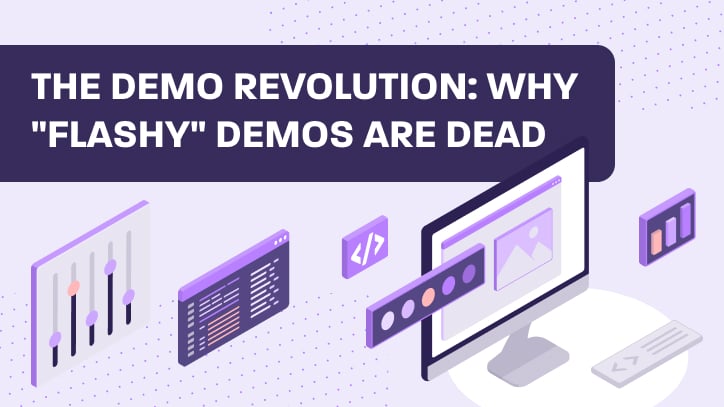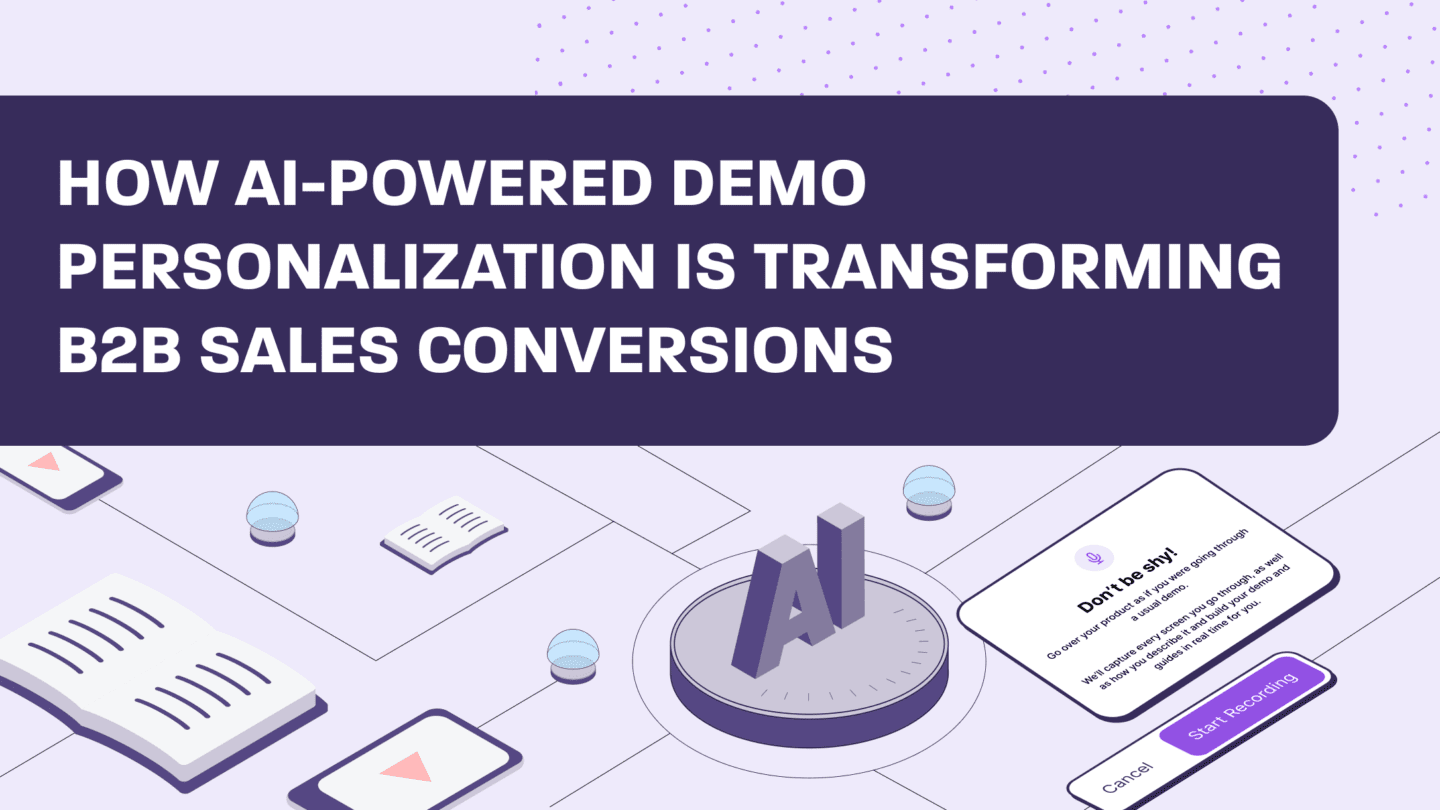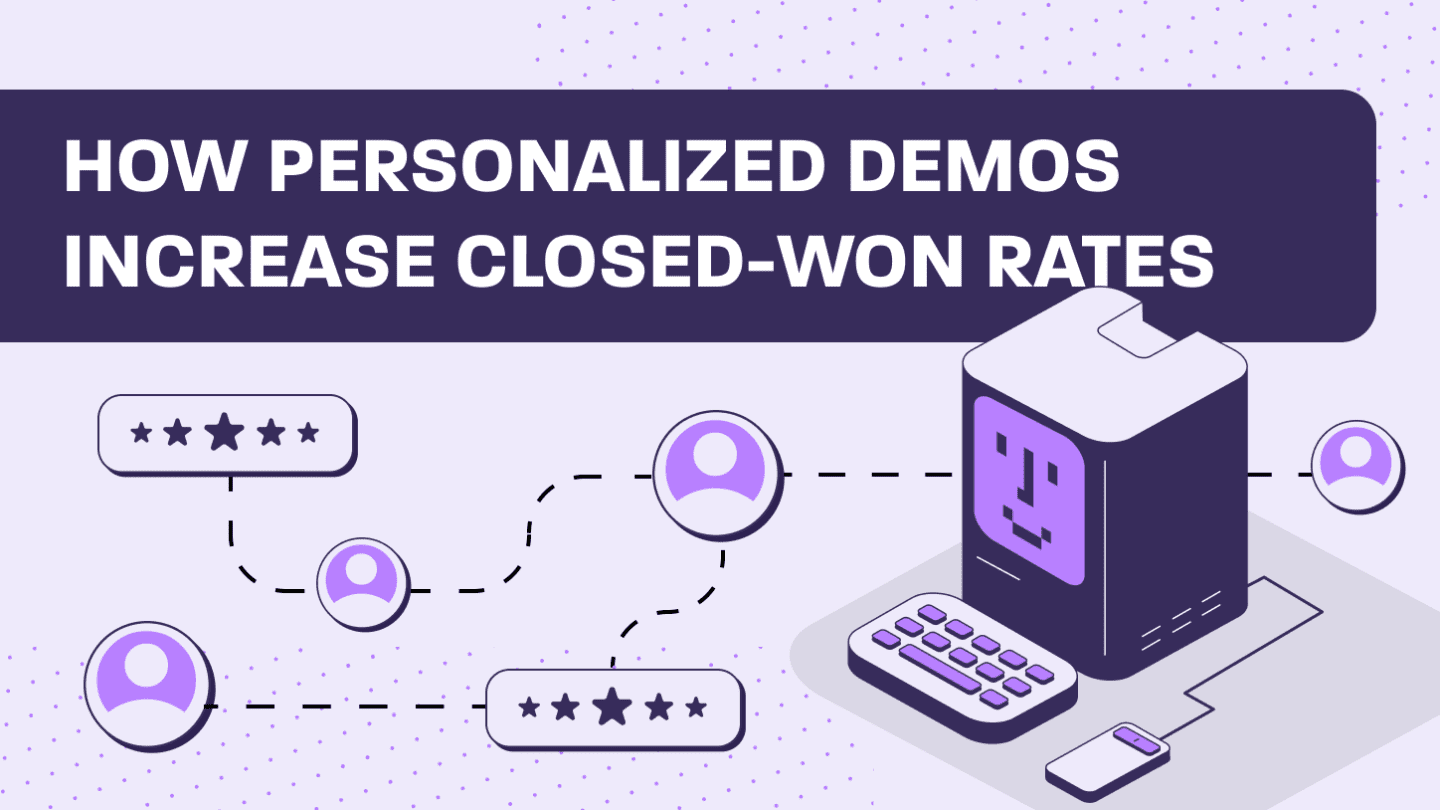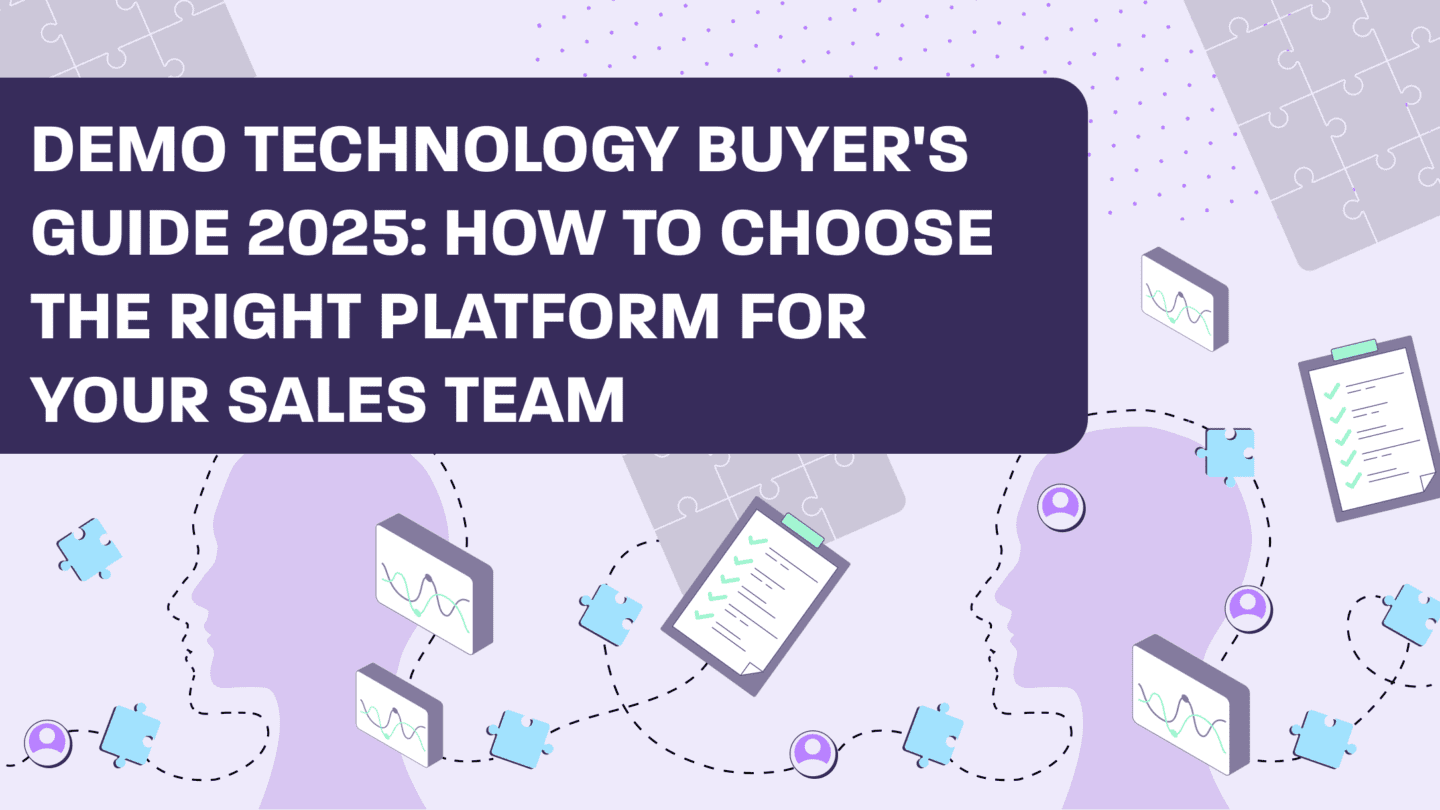At Dreamforce 2025 last week, IDC President Crawford Del Prete made an observation that should fundamentally change how every sales and marketing team thinks about demos:
“The enterprise conversation around AI adoption is shifting from flashy demos to deployment at scale.”
On the surface, this sounds like bad news for demos. But dig deeper, and you’ll find the opposite is true: demos aren’t becoming less important—they’re becoming more critical than ever.
The catch? The rules have completely changed.
The Problem With “Flashy” Demos
For years, enterprise software demos followed a predictable pattern:
- Showcase every feature
- Use perfect, sanitized data
- Create scenarios that look impressive but feel unrealistic
- Focus on “what if” instead of “what is”
These demos worked when buyers had fewer options and less information. They worked when procurement cycles were long enough that flashy presentations could carry you through multiple rounds.
They don’t work anymore.
What Changed?
Three major shifts are forcing the evolution of demos:
1. Buyers Are More Sophisticated
Today’s B2B buyers have already done extensive research before they ever talk to sales. According to Gartner, buyers are 57% through their purchase decision before engaging with a vendor.
They’ve read reviews. They’ve watched your competitors’ demos on YouTube. They’ve talked to peers in Slack communities and Reddit threads.
They don’t need to be impressed. They need to be convinced.
2. The Stakes Are Higher
With only 11% of organizations reporting that most of their AI projects deliver measurable business value (per IDC’s research), CFOs and procurement teams are scrutinizing every software purchase.
Your buyer isn’t just evaluating your product. They’re evaluating whether they can successfully implement your product and achieve ROI within a specific timeframe.
A flashy demo that doesn’t address implementation realities is worse than no demo at all—it creates false expectations.
3. Proof Comes Before Purchase
The companies winning at Dreamforce weren’t the ones with the slickest presentations. They were companies like Dell, FedEx, and PepsiCo—organizations showing Salesforce’s agent technology actually working in production environments.
The message is clear: Show, don’t tell. Prove, don’t promise.
What Buyers Actually Want to See
So if flashy demos are out, what’s in? Based on the Dreamforce conversations and broader market trends, here’s what’s working:
Scenario-Based Realism
Buyers want to see your product handling their specific challenges, not generic use cases.
Instead of: “Here’s how our AI can analyze data” Show them: “Here’s how our AI identified the top 15% of your leads most likely to convert based on engagement patterns similar to your best customers”
Transparent Implementation
Don’t hide the complexity. Show how your solution actually gets deployed.
Buyers are asking:
- How long does setup actually take?
- What integrations are required?
- What does the learning curve look like?
- Where do implementations typically hit roadblocks?
Companies that answer these questions honestly in their demos build trust. Companies that gloss over them create buyer’s remorse.
Measurable Outcomes Front and Center
Every demo should start with outcomes, not features.
The old approach:
- Here’s what our product does
- Here are the features
- And by the way, this might help with ROI
The new approach:
- Here’s the business outcome you need
- Here’s exactly how we deliver it
- Here’s the proof (case study, data, benchmarks)
Personalization at Scale
Generic demos are dead. But you can’t manually customize every demo for every prospect.
This is where modern demo platforms come in—allowing sales teams to create personalized, interactive demo experiences that feel custom-built for each prospect without requiring engineering resources for every customization.
The Real Shift: From Demo to Proof
Here’s what the Dreamforce insight really tells us: The demo isn’t disappearing. It’s becoming the proof.
In a world where buyers are skeptical and stakes are high, your demo is no longer just a presentation. It’s your most powerful proof point.
Think about it:
- Case studies prove past success
- Reviews prove customer satisfaction
- Pricing proves affordability
- Demos prove real-world viability
Your demo is the only place where a buyer can actually experience what working with your product will feel like. It’s where you prove that your solution works for their specific use case, not just in theory, but in practice.
What This Means for Your Sales Strategy
If you’re still running demos the old way—feature walkthroughs with generic examples—you’re leaving deals on the table. Here’s how to adapt:
1. Audit Your Current Demo Experience
Ask yourself:
- Are we showing features or outcomes?
- Is our demo data realistic or sanitized?
- Do prospects see themselves in our demo scenarios?
- Are we addressing implementation concerns or avoiding them?
- Can prospects explore on their own or are they dependent on us?
2. Build Outcome-First Demo Narratives
Restructure your demos around buyer outcomes:
- For sales leaders: Show how you’ll increase win rates or shorten sales cycles
- For marketing leaders: Show how you’ll improve conversion or attribution
- For operations leaders: Show how you’ll reduce manual work or improve efficiency
Lead with the outcome. Support it with the features. Back it with proof.
3. Enable Personalization Without Complexity
Your sales team needs the ability to customize demos for different prospects without waiting on product or engineering teams.
This means:
- Templated demo environments that can be easily adapted
- Industry-specific use cases ready to deploy
- The ability to incorporate prospect-specific data or scenarios
- Self-serve options for prospects who want to explore on their own
4. Measure What Matters
Stop measuring demo metrics like “number of demos given.” Start measuring:
- Demo-to-opportunity conversion rate
- Time from demo to close
- Demo engagement depth (which features did they explore?)
- Demo-influenced deal size
- Post-demo follow-up effectiveness
The Bottom Line
The shift from “flashy demos to deployment at scale” isn’t a rejection of demos. It’s an evolution.
Buyers still need to see your product in action. They still need that “aha moment” where they understand how you’ll solve their problem. They still need proof before they commit.
But they need real proof. They need demos that feel like previews of their actual experience, not marketing fiction.
The companies that figure this out—that build demo experiences focused on outcomes, realism, and proof—will have a massive competitive advantage in 2025 and beyond.
Because in a world where everyone’s promising transformation, the companies that can actually show it will win.
Ready to evolve your demo strategy? The shift is already happening. The only question is whether you’ll lead it or follow it.





